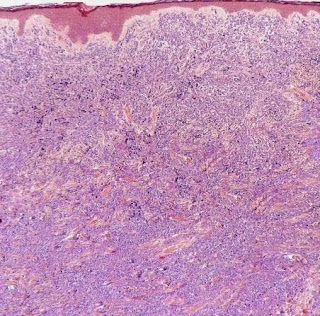
Immunohistochemistry: Smooth Muscle Actin Cutaneous Leiomyoma (Piloleiomyoma) Visit: Dermatopathology site Visit: Pathology of Piloleiomyoma Abstract: Cutaneous smooth muscle neoplasms: clinical features, histologic findings, and treatment options.J Am Acad Dermatol. 2002 Apr;46(4):477-90; quiz, 491-4. Cutaneous smooth muscle is present in 3 separate locations: arrector pili muscles, blood vessel walls, and genital/areolar skin. Benign or malignant smooth muscle neoplasms may arise from each of these locations. This review discusses the pathogenesis, clinical manifestations, histologic findings, prognosis, treatment options, and controversial areas of cutaneous smooth muscle neoplasms. ( J Am Acad Dermatol 2002;46:477-90.) Learning objective: At the completion of this learning activity, participants should be able to discuss the pathogenesis, clinical manifestations, histologic findings, prognosis, and treatment options of cutaneous smooth muscle neoplasms. Case for diagnosis: (unilat...


